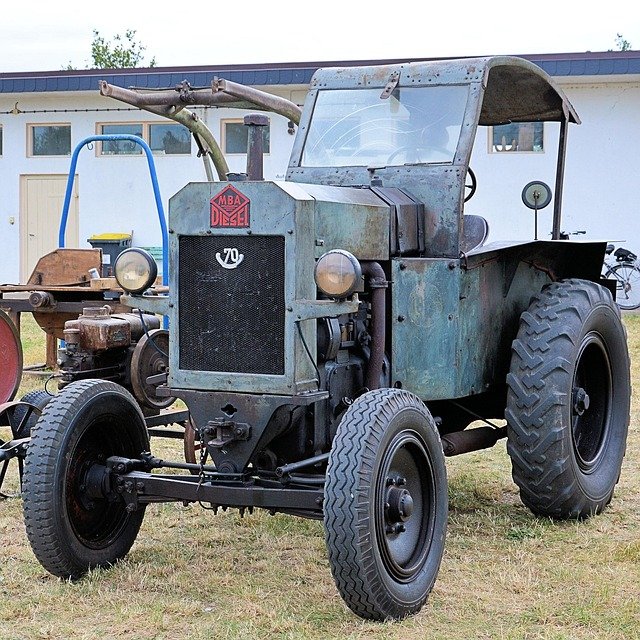Used Tractor Selection Guide for Farm Operations
Purchasing a used tractor represents a significant investment for farming operations, land management projects, and agricultural enterprises. Understanding the different types available, essential features to evaluate, and proper maintenance considerations can help ensure you select equipment that meets your specific needs while providing reliable long-term service. This comprehensive guide covers the key aspects of choosing used tractors for various agricultural and land management applications.

What Types of Tractors Are Commonly Available in the Used Market?
The used tractor market offers several distinct categories designed for different operational requirements. Utility tractors, typically ranging from 40 to 100 horsepower, represent the most common type available and work well for general farming tasks, landscaping, and property maintenance. Compact tractors, usually under 40 horsepower, are popular for smaller properties and specialized applications like orchards or vineyards.
Row crop tractors, designed with narrow wheelbases and high clearance, are frequently found in agricultural regions and excel at cultivation work between planted rows. Four-wheel-drive tractors offer enhanced traction for heavy fieldwork and challenging terrain conditions. Specialty tractors, including orchard models with low profiles and narrow configurations, appear less frequently but serve specific agricultural niches effectively.
Which Key Features Should You Look for When Selecting a Used Tractor?
Engine condition stands as the most critical feature to evaluate when examining used tractors. Check for consistent operation, minimal exhaust smoke, and proper operating temperatures. Hydraulic systems require careful inspection, as repairs can be costly. Test all hydraulic functions including loader operations, three-point hitch movement, and remote outlets.
Transmission performance affects both productivity and operating costs. Manual transmissions should shift smoothly without grinding, while hydrostatic transmissions should provide seamless speed control. Power take-off (PTO) operation is essential for implementing various attachments. Verify that both rear and mid-PTO systems function properly if equipped.
The three-point hitch system enables attachment compatibility and should raise, lower, and hold implements securely. Tire condition impacts both safety and replacement costs, so examine tread depth and sidewall integrity. Operator comfort features like seat condition, visibility, and control accessibility become important during extended use periods.
What Are the Typical Applications in Farming and Land Management?
Used tractors serve diverse roles across agricultural and land management operations. Primary tillage work includes plowing, disking, and field preparation activities that require substantial power and traction. Secondary tillage operations like cultivating, harrowing, and seedbed preparation often utilize mid-range horsepower tractors with appropriate ground speed capabilities.
Planting and seeding operations demand precise speed control and consistent power delivery. Many used tractors excel at these tasks when properly maintained and equipped with suitable implements. Hay production involves mowing, raking, baling, and transport activities that benefit from reliable hydraulic systems and PTO performance.
Livestock operations utilize tractors for feed handling, manure management, and pasture maintenance. Property maintenance tasks including brush cutting, grading, and snow removal extend tractor utility beyond traditional farming applications. Loading and material handling operations leverage front-end loaders and three-point attachments for efficient workflow management.
What Maintenance Checks Support Long-Term Use?
Regular maintenance schedules significantly impact used tractor longevity and performance reliability. Engine oil changes at manufacturer-recommended intervals help prevent premature wear and costly repairs. Monitor coolant levels and condition, replacing according to specifications to maintain proper operating temperatures.
Hydraulic fluid quality affects system performance and component life. Check levels regularly and replace filters at recommended intervals. Transmission fluid maintenance varies by type but requires attention to prevent expensive failures. Grease all lubrication points according to the maintenance schedule to reduce wear on moving components.
Air filter condition directly impacts engine performance and longevity. Inspect and clean or replace filters based on operating conditions and manufacturer recommendations. Fuel system maintenance includes regular filter changes and water separator servicing to prevent injection system problems. Battery and electrical system checks ensure reliable starting and proper implement operation.
What Practical Tips Help Choose the Right Used Tractor?
Determine your specific power requirements before shopping to avoid over-purchasing or inadequate capacity. Calculate the horsepower needed for your heaviest anticipated implement to ensure compatibility. Consider your property size, terrain characteristics, and primary applications when evaluating different models.
Research manufacturer reputation and parts availability for the models under consideration. Some brands offer better local dealer support and more readily available components. Inspect maintenance records when available, as documented service history indicates proper care and can reveal potential issues.
Test drive tractors under actual working conditions rather than relying solely on visual inspections. Operate all systems including steering, braking, and hydraulics. Listen for unusual noises and monitor gauge readings during operation. Consider hiring a qualified mechanic for pre-purchase inspections on higher-value equipment.
Budget for immediate repairs and ongoing maintenance costs beyond the purchase price. Factor in implement compatibility and any necessary modifications. Evaluate financing options and warranty coverage when available from dealers or certified programs.
Used tractors provide cost-effective solutions for agricultural and land management operations when selected carefully. Understanding the available types, essential features, maintenance requirements, and selection criteria helps ensure successful equipment purchases that deliver reliable long-term performance for diverse farming applications.




